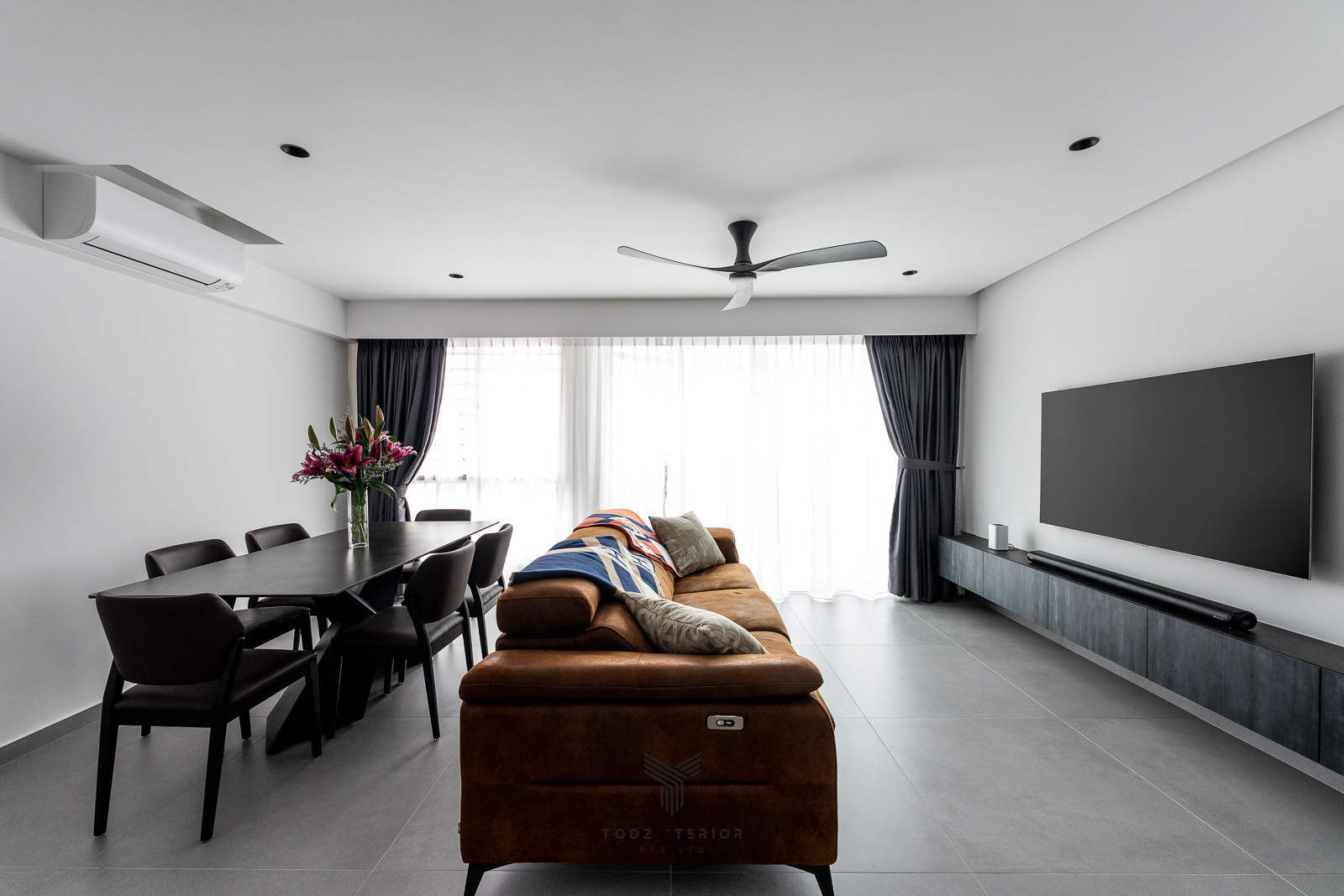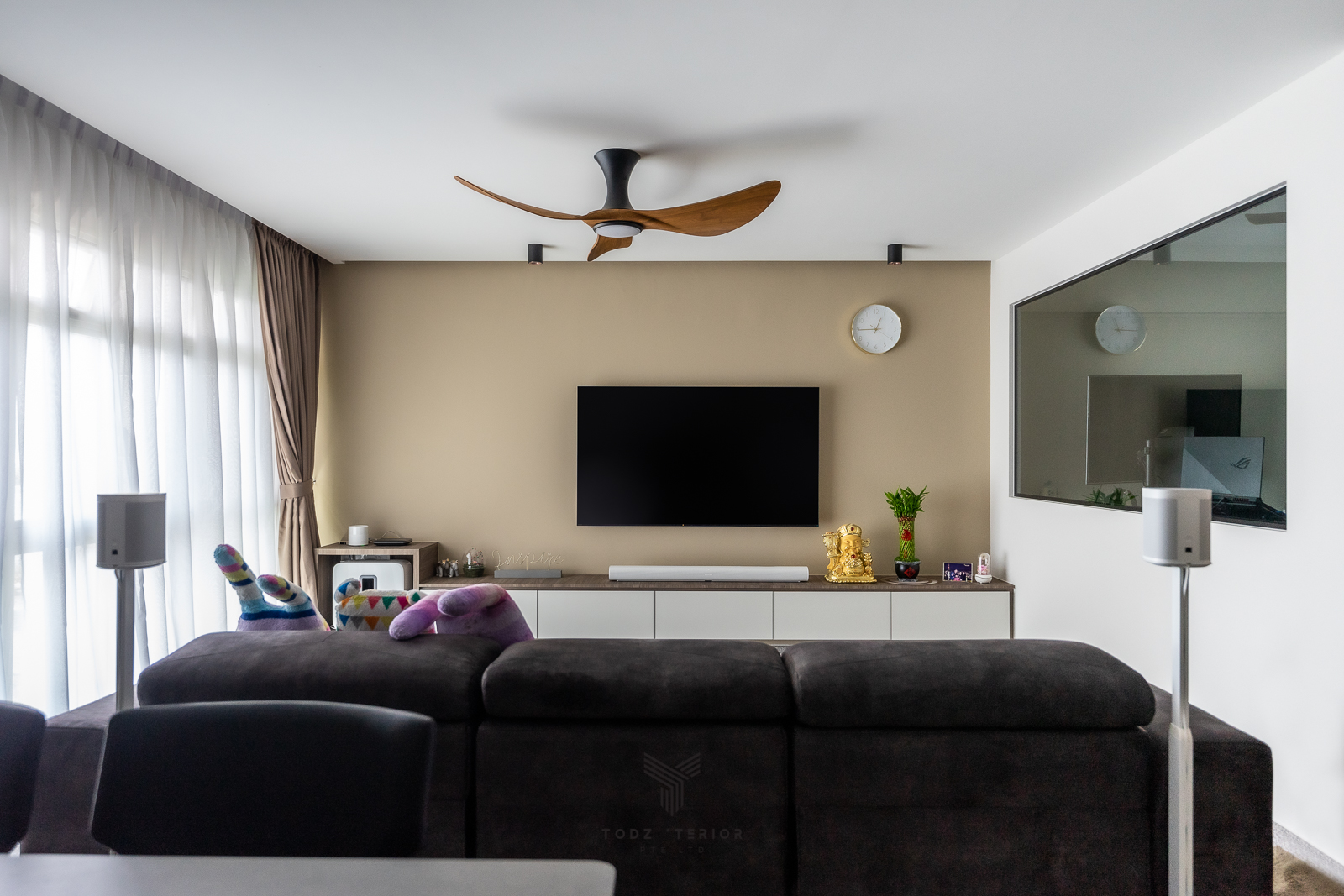As Singapore continues to grow and develop, so does our responsibility to care for the environment. One way to make a positive impact is by adopting sustainable practices in our everyday lives, including our home decoration choices. Sustainable home decoration involves using eco-friendly materials, incorporating nature into your home, upcycling old items, and choosing energy-efficient lighting options.
In This Article
ToggleBy decorating sustainably, we can reduce waste, promote a healthier living environment, and protect the planet. In this article, we’ll provide you with practical tips and ideas to help you decorate your home sustainably in Singapore. Let’s start making a difference, one sustainable decoration at a time.

Choosing Sustainable Materials
Choosing sustainable materials is an important step towards reducing our impact on the environment. Here are some materials to avoid and sustainable alternatives that can be used instead:
Materials to avoid:
- Single-use plastics: These are plastics that are designed to be used only once and then thrown away. They include items such as plastic bags, straws, and water bottles. Single-use plastics are a major contributor to plastic pollution in our oceans and landfills.
- Non-biodegradable materials: These are materials that do not break down naturally over time. They include items such as Styrofoam, certain types of plastics, and synthetic fabrics. Non-biodegradable materials can take hundreds of years to decompose, contributing to environmental degradation.
Sustainable alternatives:
- Recycled materials: Recycled materials are made from materials that have been used before and then processed to create new products. Examples include recycled plastic, recycled paper, and recycled metals. Using recycled materials reduces the need for virgin materials, which helps to conserve natural resources.
- Organic fabrics: Organic fabrics are made from materials that are grown without the use of harmful pesticides and chemicals. Examples include organic cotton, hemp, and bamboo. Using organic fabrics reduces the amount of harmful chemicals that are released into the environment during the manufacturing process.

Incorporating Nature into Your Home
Incorporating nature into your home is a great way to bring the beauty of the outdoors inside and create a more sustainable living space. Here are some ways to incorporate nature into your home:
Benefits of having indoor plants:
- Improve air quality: Indoor plants can help to remove pollutants from the air, including formaldehyde, benzene, and trichloroethylene.
- Reduce stress: Research has shown that being around plants can help to reduce stress levels and improve overall well-being.
- Boost productivity: Studies have found that having plants in the workplace can help to increase productivity and creativity.
Sustainable gardening practices:
- Composting: Composting is the process of breaking down organic materials, such as food scraps and yard waste, into a nutrient-rich soil amendment. By composting, you can reduce the amount of waste that goes to the landfill and create a sustainable source of fertilizer for your plants.
- Using rainwater: Collecting rainwater in a barrel or cistern can provide a sustainable source of water for your indoor and outdoor plants. Using rainwater can also help to reduce your water bill and conserve this precious resource.
Upcycling and DIY
Upcycling and DIY are great ways to reduce waste and create new, unique items from old materials. Here are some ideas for upcycling and DIY projects:
Repurposing old furniture and materials:
- Turn old clothing into cleaning rags: Old t-shirts, towels, and other textiles can be cut up and repurposed as cleaning rags. This can help to reduce waste and save money on disposable cleaning products.
- Convert an old dresser into a kitchen island: An old dresser can be transformed into a unique kitchen island by removing the top drawers and adding shelves or a countertop. This can provide additional storage and workspace in your kitchen.
DIY projects using sustainable materials:
- Build a compost bin: A compost bin can be built using recycled pallets or other reclaimed materials. This can provide a sustainable way to dispose of food waste and create nutrient-rich compost for your garden.
- Make your own beeswax wraps: Beeswax wraps can be made using organic cotton fabric and beeswax. These can be used as an eco-friendly alternative to plastic wrap.

Energy-Efficient Lighting
Energy-efficient lighting is an important aspect of sustainable living, as it can help to reduce our energy consumption and lower our impact on the environment. Here are some key points about energy-efficient lighting:
The impact of lighting on the environment:
- Energy consumption: Traditional incandescent bulbs use a lot of energy and are not very efficient. This leads to higher energy consumption and a greater impact on the environment.
- Carbon emissions: The energy used to power traditional lighting sources often comes from non-renewable sources, which can result in increased carbon emissions and contribute to climate change.
Choosing energy-efficient lighting options:
- LED bulbs: LED bulbs are a highly energy-efficient lighting option that use up to 80% less energy than traditional incandescent bulbs. They also last longer, which reduces the amount of waste generated from burned-out bulbs.
- Compact fluorescent bulbs: Compact fluorescent bulbs, or CFLs, are another energy-efficient lighting option that use up to 75% less energy than traditional bulbs. They also last longer than incandescent bulbs.
- Natural lighting: Maximizing natural light in your home can also be an energy-efficient option. This can be achieved by using light-colored paint on walls and ceilings, using skylights or solar tubes, and opening blinds or curtains to let in natural light.
What we have learnt
Sustainable home decoration is not only beneficial to the environment, but it can also be fun and creative. By incorporating sustainable practices into our homes, we can make a positive impact and inspire others to do the same. From choosing eco-friendly materials to upcycling old items, there are plenty of ways to decorate your home sustainably in Singapore.
By making small changes to our decoration choices, we can create a healthier and more sustainable living environment for ourselves and future generations. Let’s work together to create a greener and more sustainable world, starting with our homes.

Renovate with Todzterior!
We’re here to help you get started with Smart Home solutions.
Todzterior is the only company whose mission is to make homes “Smart.” In other words, our Smart Home solutions are built to help make your life easier. The possibilities for the future of the smart home are endless. You’ve come to the right place. We’re here to help you get started with Smart Home solutions and ensure you with smart quality and reliability.
Don’t hesitate to find out more about us. Call us here or visit our showroom at 7 Gambas Crescent #01-03 Ark@Gambas Singapore 757087.
Frequently asked Question
1) What is sustainable home decoration?
A: Sustainable home decoration involves using eco-friendly materials, incorporating nature into your home, upcycling old items, and choosing energy-efficient lighting options. This helps reduce waste, promote a healthier living environment, and protect the planet.
2) What are some eco-friendly materials for sustainable home decoration?
A: Some eco-friendly materials for sustainable home decoration include recycled materials, organic fabrics, and sustainably sourced wood.
3) How can I incorporate nature into my home decor?
A: To estimate the costs of a renovation project, you should research the costs of materials, labor, and permits. You should also obtain quotes from contractors and add a contingency for unexpected expenses.
4) What are some upcycling and DIY ideas for sustainable home decoration?
A: Some upcycling and DIY ideas for sustainable home decoration include repurposing old furniture and materials, creating homemade decorations using sustainable materials, and turning old jars and bottles into vases or candleholders.
5) How can I choose energy-efficient lighting options for sustainable home decoration?
A: You can choose energy-efficient lighting options for sustainable home decoration by selecting LED lights, using natural light whenever possible, and installing dimmer switches to adjust the brightness of your lights.
